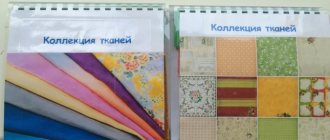Hello dear friends. Zhorik’s dad, Alexander Borisov, is in touch with you, and today we will talk to you about the method of teaching preschool children to play chess, or, as they are also called, young preschool children.
So that you understand right away that I now have the right to teach you something and give some advice and recommendations as a parent or teacher, I will immediately introduce you to my 4-year-old son Zhorik, who learned to play at 3 years and 11 months, and 3 months later he took 2nd place at the Russian Chess Cup stage in Peterhof, defeating children aged 6-8 years.
You can read more about it HERE. Who is he and what awards and achievements does he have? Zhorik and I have prepared a whole training course on how parents and teachers need to properly teach preschoolers and children of any age to play chess.
In general, you can immediately purchase the course using the link above and you can say the technique is in your pocket. Teach your child to play in 1-2 weeks. But I’m not only writing this article to sell you a course, right? Let me briefly tell you about the most important thing.
I say this constantly at every webinar and in every article.
Tip #1 - You don’t need to take your child to a chess school.
They write to me by email, on Skype and in online chat, “Alexander, please advise which school to send my child to so that they can teach him how to play...”. I usually answer like this: “Not at all. You must teach your child within the walls of your own home.”
And then the person is immediately indignant, “You mean yourself? Shouldn’t a specialist teach children?” =) Come on, so that I don’t repeat myself, I’d better let you read this article. Really, read the very first advice in it and you will understand everything.
If you take an immature preschool child to a chess school, there is approximately an 80% chance that you will ruin his entire chess career, which may not even begin.
The benefits of chess for children
“Without chess it is impossible to imagine the full development of mental abilities and memory. The game of chess should enter into life as one of the elements of mental culture.” V.A Sukhomlinsky is a talented Soviet teacher and writer.
If your child is hyperactive and likes chess, support his desire, as it develops perseverance and discipline. If you want to develop your child's intelligence, be sure to try teaching him to play chess.
The first steps in learning should begin with close relatives; if mom and dad do not have the appropriate knowledge, this could be grandparents. After studying the pieces and basic knowledge, you can send your child to the chess section. You will not regret it because the benefits of playing chess are obvious:
- develops the thought process;
- the baby becomes diligent and attentive;
- gives an understanding of the consequences of his actions, teaches him to be responsible;
- develops logical thinking;
- teaches you to think outside the box;
- teaches you to analyze the actions of the enemy and predict his behavior.
Tip #3 - Don't give sweets before training.
In general, I recommend 1-2 days before you decide to start teaching your child chess, so that he sits at home in silence. Put together puzzles with your child, read a book in silence, and it will be very easy for him to learn chess.
No cartoons, visits to play centers, kindergartens, a mountain of friends at home and everything like that. When a child has a motor in his butt that has not cooled down, it will be difficult for him to sit down at the chessboard and begin to calmly listen to your moral teachings. =)
And if you also fed your child sweets, then consider it lost =)
Chess: rules for beginner children
The first lesson begins with an introduction to figures. The baby needs to remember their names. Perhaps he will want to play with the chess pieces as he pleases. Let him do it. If your child likes to fantasize, then you can come up with a fairy tale about a chess country.
the second lesson to telling your child that each piece has a position on the board and the pieces move according to certain rules:
The pawn takes only one step forward on the plane of the board, and eats the enemy piece diagonally. Also, a pawn is promoted to any piece if it manages to reach the opposite edge of the board.
The king can also take one step , although in any direction.
The queen is the most powerful in the entire game. Moves straight, sideways, and diagonally.
The knight has an unusual move: it jumps over the other figures two squares and one sideways. His move is similar to the letter "G".
The bishop moves diagonally the required number of squares.
Rook forward or sideways.
All pieces are removed from the board, and the king cannot be eaten. You can only declare checkmate.
You can devote a separate lesson to each. Then show how they work in conjunction with each other. If the baby is tired, then there is no need to insist on the lesson. This can discourage you from playing the game forever.
Take your time and accompany your learning of the rules with various games:
- Wonderful bag. Hide all the chess pieces in an opaque bag one by one and ask the child to determine by touch which piece you have hidden. For greater effect, let your baby hide the pieces and guess which chess piece is in the bag.
- "Find differences". Ask your child to list all the differences between one figure and another.
- "What's missing." You place all the representatives of the chess pieces on the table and, when the child turns away, you remove one piece. The kid must guess which figure you hid. This game perfectly develops visual memory.
- Modeling chess pieces from plasticine or clay.
- "Cube". Take one of the old cubes, draw each of the six chess pieces on paper, and glue the designs to the faces of the cube. Or glue a cube from whatman paper. Throw the dice one at a time. The thrower must name the figure that appears on the top face of the die.
- "Guessing game." Verbally describe a chess piece to your child and ask him to guess what kind of piece it is. Then switch roles.
- "Forbidden figure" Place the chess pieces in front of the child in one row. At your request, the baby will name all the shown figures, except for the “forbidden” one, which is selected in advance. Instead of naming the forbidden figure, you should say: “Secret.”
- “Let’s play and guess.” Wish your child a chess piece. The kid lists the figures until he names the one he has in mind. Then switch roles.
- "Letter". Ask your child which chess pieces have names that begin with the letters K, L, P, C, F.
- "What common?". Take any two chess pieces and ask your child: how are they similar? What is the difference? (Color, shape).
- "Big and small." Place six different chess pieces in front of your child, ask them to choose the tallest one, name it and set it aside. Then the child will determine the tallest of the remaining figures, etc. At the end of the game, all chess pieces are returned to their place, and a new game begins, in which the lowest chess piece is chosen.
- "Chess house". Build a little house out of cubes, into which the chess pieces will run one at a time, from the smallest to the largest. The child must name each of them.
- "Chess turnip" Plant a turnip. Next to her, the child lines up chess pieces according to their height, explaining: “Grandfather is a king, grandmother is a queen, granddaughter is a bishop, a bug is a knight, a cat is a rook, a mouse is a pawn.”
- "Chess bun". A didactic game-dramatization of the fairy tale “Kolobok” can be played like this: the grandfather is the king, the woman is the queen, the hare is the pawn, the fox is the knight, the wolf is the elephant, the bear is the rook, and the bun is a ball or ball. The child must name all the chess pieces from which the bun is running away. At the end of the fairy tale, let the fox not eat the bun, the bun will run away from it.
- "White and Black." Place six different white and black chess pieces on the table in disarray. When starting a didactic game, set one of the figures aside, naming it and indicating its color, for example: “White horse.” The child continues the game and chooses a chess piece of a different name and color (this is the condition), always calling it, for example: “Black Queen.” Next, you introduce a new chess piece, etc.
- "School". Turn the wooden chessboard over with the squares down, place chess pieces in the recesses and tell the child: “These are your students. What is this student's name? And this? And this?. ."
- "Color". Ask your child to place all white or all black chess pieces in one row. When the child completes the task, switch roles and, for example, placing white pieces next to each other, “by mistake” place one or two black chess pieces there. The child should notice your mistake and point it out.
- "Pyramid". Advise your child to place a black one on the white rook, then again white and black, and on the very top - the white king. Ask your child if it is possible to build a pyramid using other chess pieces.
- "Catching up." Select one of the white pieces, for example a queen, and imitate it running across the table. After this, invite the child to choose and name a black piece and set off after your queen. Let your chess piece not “run” very fast, and the child’s piece will catch up with it. Then switch roles.
- "Hide and seek." Hide several chess pieces in the room. The child must find and name them. In this didactic game, unlike others, it is very dangerous to change roles, as you risk being left with an incomplete set of chess pieces.
- "Over your head." Name some chess piece. The child must select it and raise it above his head.
- "On the chair". Place one of the chess pieces on the chair. Stand on opposite sides of the chair, but at an equal distance from it, with the child. Count to three and on the count of three, run to the chair. The first one to grab a chess piece must name it.
- “Take the same one away.” All chess pieces stand or lie on the table. Put one of the figures into the box. Ask your child to name this piece and put another similar chess piece in the box, etc.
- "The room is full." A complete set of chess pieces is placed on the table. Nearby, with the fields facing down, lies an open wooden chessboard or box for chess pieces. Invite your child to take one of the chess pieces, name it and put it to “sleep” in a box or chessboard. The next figure is laid out by you. And so on until all the chess pieces are in the box. After this, the child closes the box or latches the chessboard.
The last two educational games are designed to make the process of collecting chess pieces after the end of the lesson quite entertaining.
In the third lesson, work with your child on the correct placement of the figures and the simplest steps of each figure from memory.
Once he remembers where their place is on the board, you can teach the rules of the game step by step. A little chess player must understand the basic principles :
- Always provide cover for your king.
- Game characters can only be eaten if they are sacrificed in favor of a successful move.
- The weaker the figure, the closer to the center it should stand.
- The value of the pieces is different: a rook is more valuable than a pawn, and the king, although influential, is helpless.
- It is advisable to be the first to neutralize the enemy queen.
To maintain interest in the game and improve your child’s skills, there are several recommendations from chess school teachers:
- Winning the game will be an incentive, but you shouldn’t give in to your child often, otherwise he will decide that there is no need to study further.
- Play only when the child has a desire.
- The preparatory stage for playing chess can be practicing checkers.
- It is useful after the game to discuss its progress, what mistakes were made, and what actions were successful.
- Buy a book with chess problems for children.
- It is necessary to celebrate the child’s successes and praise them for successful moves.
Teach your children to play chess. I hope that the tips on how to conduct your child’s first chess lessons will help you get your child interested in this wonderful and very useful game.
You can also find a wonderful illustrated book for children for yourself
F. Halas, Z. Getsi “Adventures in the chess kingdom.” Good luck!
How to teach chess in a playful way
The earlier the process of getting to know chess begins, the more appropriate it will be to use game-based learning techniques. It is important to understand that classes should not be tedious and drawn-out, but rather dynamic and special, awakening the desire to find out what will happen next.
The training should be divided into several stages so that each of them is short, informative and non-standard. You can use different activities:
- test moves or knowledge of pieces;
- additional soldier figures that need to be removed from the board;
- cards with options for moves, order of pieces,
Important!
The main thing is that the learning process should not be a dry retelling of theory.
It would be perfect to use an interesting fairy tale, the heroes of which are pieces, and each of them will receive their own role and actions corresponding to their behavior on the board in the game. The scenario should be thought through and applied constantly, making adjustments to the course of the battle and options for using the heroes of the fairy tale. For young players, the associative series is very important. You can use this option for the names of the figures and their meanings:
- the king has a symbol of power - the crown and therefore the most important, everyone must protect him and follow his orders and moves;
- the queen is the queen, she is next to the king and is always ready to protect him, she has a special status thanks to her crown;
- rook - two important pillars of defense, directly help in it;
- the elephant is a secret protector, his face is hidden under a scarf, that’s why he has this shape;
- a horse is a faithful assistant and friend;
- pawns are soldiers, ready to be the first to join the battle.
Using such parallels, you can further indicate why exactly each figure should move this way and not otherwise. In context, children remember the rules better, and the game becomes an adventure for them, spurring interest and desire to continue it.
See also:
Birthday in Minecraft style - how to organize a party at home
Important tips for parents on learning chess from scratch
Parents who want to teach their child this game should understand that their personal example and sequence of actions will be the key to future success. You should use the experience of chess school teachers and adhere to the following rules when teaching children:
- balance between winning and losing to teach your child about the possibilities of both options;
- set a time frame for studying and stick to the regime;
- Show additional resources where you can apply or create shapes;
- discuss moves and actions during and after the game;
- praise your baby's achievements;
- buy a new and beautiful board, preferably with large figures, so it’s easier to perceive and study them;
- do not rush to participate in the tournament as soon as you learn the rules, as the likelihood of mental trauma is high.
It is worth being patient and having a positive attitude before starting classes to learn chess from scratch.
Do not neglect the peculiarities of your child’s worldview and his inclinations, since not everyone finds chess interesting.
See also:
Menu for children's birthday - food and drinks
Self-learning for your child in online games
Until the age of 6, interactive learning is the best choice for a child; it helps develop his abilities, thinking processes and at the same time does not allow him to get bored in the process of learning about the world.
There are many computer games that teach chess and provide the opportunity to independently master such skills using a PC.
The principle of such a game is based on the presence of heroes who accompany the child in a world where chess pieces reign and he lives by their rules. Acquaintance with the rules occurs gradually and is captivating, since it is associated with receiving certain bonuses along with knowledge, as well as the opportunity to save, win, or help someone, which has a positive effect on the development of social skills.
Popular options for online educational games for children are:
- Aladdin - magic chess;
- Dinosaurs teach chess;
- Chess country.
Note!
When choosing this training option, it is important to monitor how much time the child spends in front of the monitor and help him if he does not understand something. After all, the main goal is learning, not spending time at the computer.
How to play with a young grandmaster
- Don't try to beat the baby. If he constantly loses, he will quickly lose interest in the game. Sometimes lose if you see that your little student makes good moves and chose the right strategy, and you can also arrange a draw;
- You cannot lose constantly or often, because after a rare defeat he will be very worried;
- Analyze each game played with your child. Encourage good moves and discuss bad ones;
- You need to play regularly and not take long breaks;
- There is no need to expect quick and serious results from your child, do not put pressure on him;
- There is no need to let the baby walk; he must be aware of the responsibility for the move he makes.




